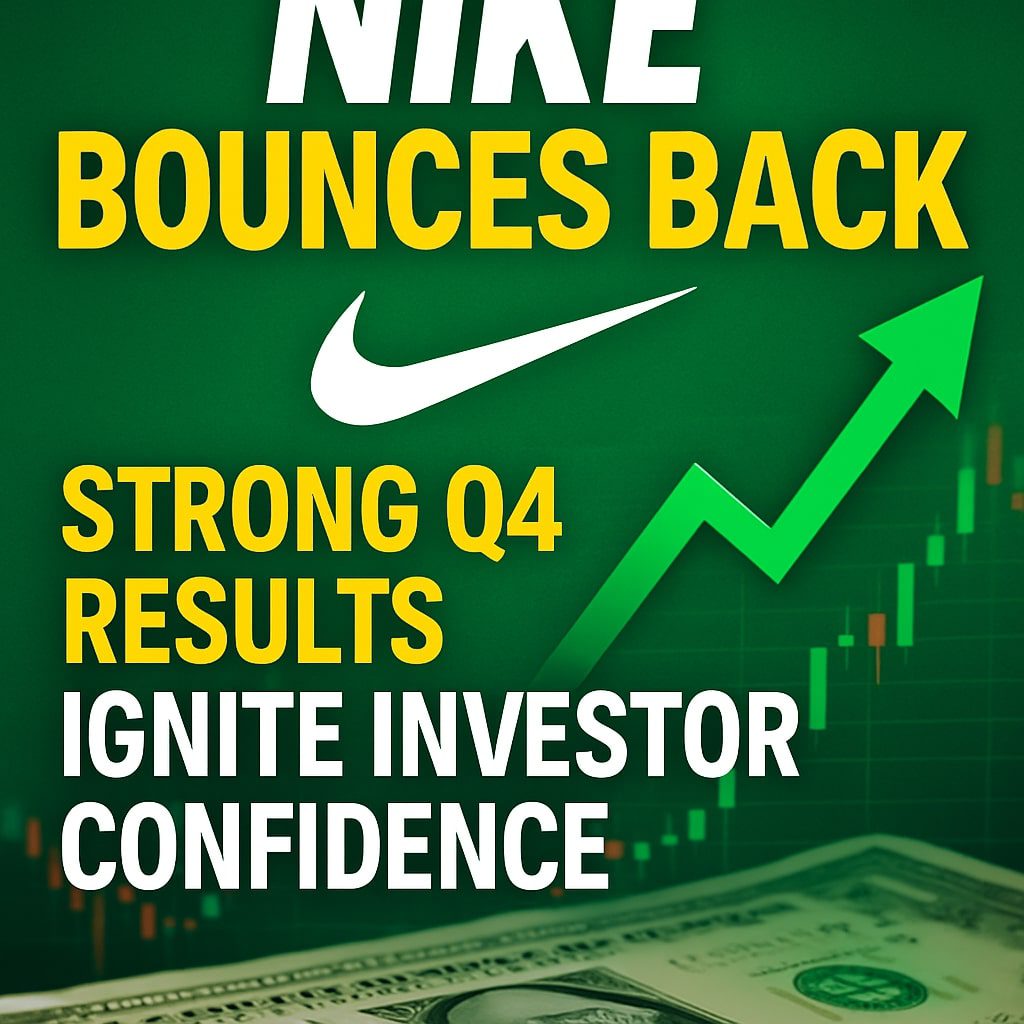Address
South Garo Hills Meghalaya
Address
South Garo Hills Meghalaya
Nike Bounces Back: Nike just reminded Wall Street that the world’s largest sportswear brand still has plenty of fight left. Fiscal fourth-quarter 2025 (ended 31 May 2025) revenue of $11.1 billion and diluted EPS of $0.14 both topped muted estimates, sending the shares up roughly 10–11 % in after-hours trading on 26 June 2025.
Below, we unpack what powered the beat, why investors are warming back up to NKE, and what to watch as the company races into FY 2026.

| Metric | Q4 2025 | YoY Δ | Street View* | Beat / Miss |
|---|---|---|---|---|
| Revenue | $11.1 B | −12 % | $10.72 B | ✔ Beat |
| Gross Margin | 40.3 % | −440 bps | 39.8 % (est.) | ✔ Beat |
| Diluted EPS | $0.14 | −86 % | $0.12 | ✔ Beat |
| Net Income | $211 M | −86 % | $185 M (est.) | ✔ Beat |
| Inventories | $7.5 B | Flat | — | — |
*Consensus compiled by LSEG and FactSet. Figures rounded.
You are reading this article on roastno.com. If you like this article, then definitely share it with your friends….
Ultimate Guide to Rocket Lab (RKLB) Stock Price History & Outlook
Dow Jones Historical Data: A Deep Dive into the Stock Market’s Most Iconic Index (1896–2025)
HIMS Stock Prediction 2025: Can Hims & Hers Health Inc (HIMS) Be the Next Big Growth Stock?
Gross margin compressed 440 bps to 40.3 %:
U.S. tariffs could add ≈ $1 billion in costs, prompting Nike to cut the share of U.S.-bound production made in China from 16 % to the “high-single-digit” range by May 2026. Sourcing is being diversified to Vietnam, Indonesia, and near-shore Latin American partners, helping de-risk the supply chain and blunt headline risk around U.S.–China relations.
| Brand | Latest Quarter Revenue Growth | Key 2025 Plays |
|---|---|---|
| Nike | –12 % | Paris Olympics kits; Pegasus 42 launch |
| Adidas | –6 % | Samba & Gazelle “terrace” revival |
| Lululemon | +10 % | Men’s footwear push |
| Under Armour | –5 % | New Curry Brand running shoe |
| On Holding | +21 % | Paris marathon partnership |
The Olympic spotlight typically boosts Nike sell-through by 200–250 bps in the two quarters surrounding the Games, a tailwind rivals envy.
| Metric | FY 2026 Guidance | Street Consensus |
|---|---|---|
| Revenue | Down mid-single digits YoY (vs. –10 % FY 2025) | –6 % |
| Gross Margin | Flat to +50 bps | +30 bps |
| EPS | Low-to-mid-$2 range | $2.28 |
Management believes the “largest financial impact” from Win Now restructuring is already booked.
Bull Case:
Bear Case:
For risk-tolerant, long-horizon investors, nibbling below the mid-60s offers a favorable risk-reward skew—but position-size prudently given near-term volatility.
Nike’s Q4 2025 print was far from perfect—sales and profit still shrank sharply—but in a market primed for doom, “less bad” was good enough. Early wins in running, disciplined costs, and an Olympic-year catalyst have investors lacing up for a comeback run. Whether Nike can sprint back to its growth-stock glory will depend on flawless execution of its sport-offense playbook and a steady cadence of must-have performance products. For now, the Swoosh has at least regained its forward momentum—and that’s a start.
Because both revenue ($11.1 B) and EPS ($0.14) beat analyst forecasts, and management guided to smaller declines ahead, investors saw early evidence the turnaround is gaining traction.
Nike estimates up to $1 B of cost exposure. The company plans to offset this through sourcing diversification and selective price increases.
CEO Elliott Hill is refocusing marketing and product pipelines around core sports (running, basketball, women’s fitness) rather than lifestyle hype, aiming to reignite brand heat where Nike historically dominates.
Management won’t commit to a specific quarter, but the current guide implies a shallower decline in Q1 FY 2026 and potential flat-to-modest growth exiting the year if Olympics merchandising and new performance lines land well.
Nike has increased its dividend 23 straight years; payout ratio sits near 55 % of FY 2025 EPS. Cash of $9.2 B and investment-grade credit make a cut highly unlikely barring a prolonged recession.
[…] Nike Bounces Back: Strong Q4 Results Ignite Investor Confidence […]